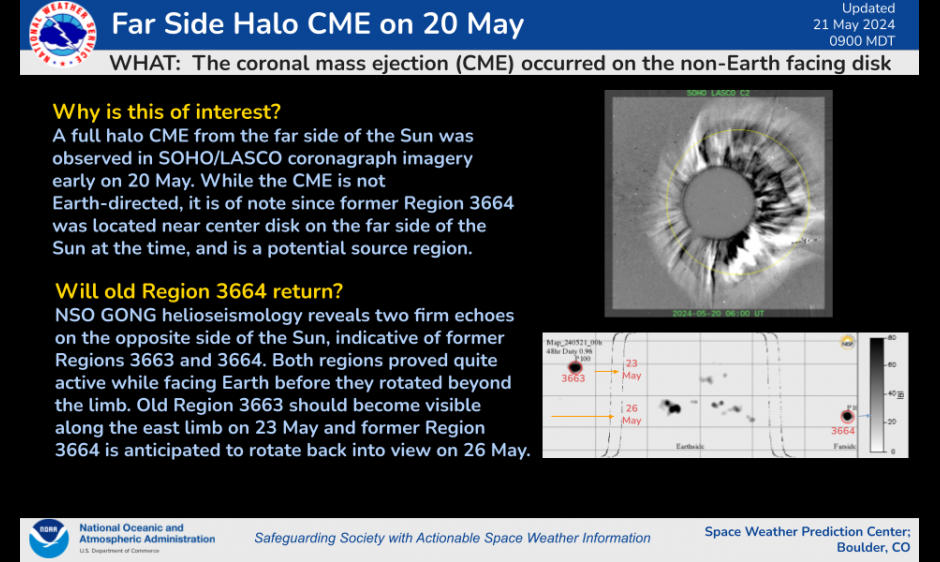
Far Side CME Observed on 20 May
A far side halo coronal mass ejection (CME) was observed in NASA/SOHO coronagraph imagery early on 20 May, 2024. The CME was determined to be from the opposite side of the Sun and is not Earth-directed. However, old Region 3664 is back there right now and is a likely source. Will old Region 3664 survive it's solar rotation journey? If so, the former region is anticipated to return on 26 May. Keep informed with our latest forecasts and information.